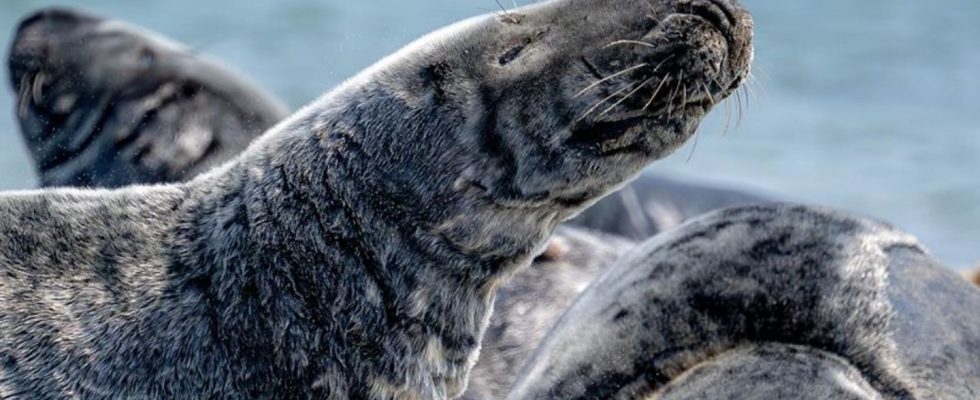North Sea
Gray seal: Germany’s largest predator is multiplying magnificently
Gray seals lie on the beach on the dune in front of the island of Heligoland in the North Sea
© Sina Schuldt/dpa/DPA
Germany’s largest predator multiplies magnificently. The gray seals seem to like it particularly well in the Wadden Sea of the North Sea and on Helgoland. In recent years, the number of juveniles and adults has increased significantly.
The gray seals multiply splendidly in the Wadden Sea of the North Sea and on Helgoland. The number of young animals there has increased by an average of 13 percent over the past five years, as the Wadden Sea Secretariat based in Wilhelmshaven announced on Monday. A group of experts from Denmark, Germany and the Netherlands will count the animals for the 2022/2023 season from the plane. On Helgoland, the offspring were observed from the beaches and with drones.
North Sea: The number of adult gray seals is also increasing significantly
A little later – between March and April – the adult gray seals are counted. Here, too, there is a significant increase of 18 percent compared to the previous year. The experts in the region registered more than 10,500 adult gray seals. By far most of the animals live in the Dutch Wadden Sea. The counts revealed more than 7600 gray seals in this region alone.
“The North Sea Book”
Visual reading: everything you always wanted to know about the North Sea
With a good 1,400 gray seals, Heligoland accounted for 13 percent, followed by Lower Saxony and Hamburg with almost 1,200 animals. More than 170 gray seals were observed in the Schleswig-Holstein Wadden Sea area and 145 in Denmark.

